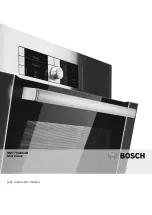
41
UHF System Configuration
enuator
election
—
tch
en
it to 0
m.
mber
ation
he
ms
cables
a DWX
ance
oduced
ms
h
losses
o a
d
tems.
to
Number of antennas and diversity reception
Use two identical antennas
The DWX system, like the conventional analog wireless system, uses the space diversity reception principle.
Two antennas are employed to receive the signal, with the system automatically switching to the antenna
with the stronger signal.
To ensure stable reception, the two antennas must be identical.
Spacing between antennas: 1 to 20 meters (3.2 to 65.6 ft.)
One may think that the further the two antennas are apart, the better the reception performance, but
this is not necessarily true. It is usually not necessary to maintain a large distance between the antennas.
Of course, if the antennas are too close to each other (less than 1 meter (3.2 ft.)), the advantages of
the diversity system will be lost, but since the wavelength of a radio wave in the 600 MHz band is about
50 centimeters (1.6 ft.), ensuring a distance of about 3 to 5 times the wavelength (1.2 to 2 meters (3.9 to
6.6 ft.)) will usually result in good diversity reception. The distance should generally be kept well below the
maximum of 20 meters (65.6 ft.), because performance will decrease above this point.
Use shorter, thicker BNC cables of identical length
To minimize transmission losses, the BNC cables should be as short and large-gauge as possible. If there is
a difference in cable length, differences in cable loss can degrade the diversity effect. Make sure that both
BNC cables are of the same length.
Use two antenna sets (4 antennas) in large venues
In large venues where two antennas do not provide sufficient coverage, and in cases where there are spots
without direct line of sight between transmitter and antenna, the UHF Antenna Divider WD-850 should be
used to allow for two sets of antennas (total 4 antennas).
If venues such as banquet halls are partitioned into separate sections, a separate antenna installation
should be provided for each section. In some cases, partition panels may incorporate metal plates for
sound proofing, which may also block radio transmission. Special care is required in such instances.
However, simply increasing the number of antennas is not always the answer, and an excessive number
of antennas (such as 3 or 4 sets) may lead to mutual interference and thereby degrade reception
performance.
Multiple dividers make it possible to use antennas for other systems, but the number of antennas receiving
the same RF signal should be kept to no more than two sets. (In a small venue, even two antenna sets may
result in decreased reception performance. Always check actual performance before starting operation.)
Configuring a DWX System















































